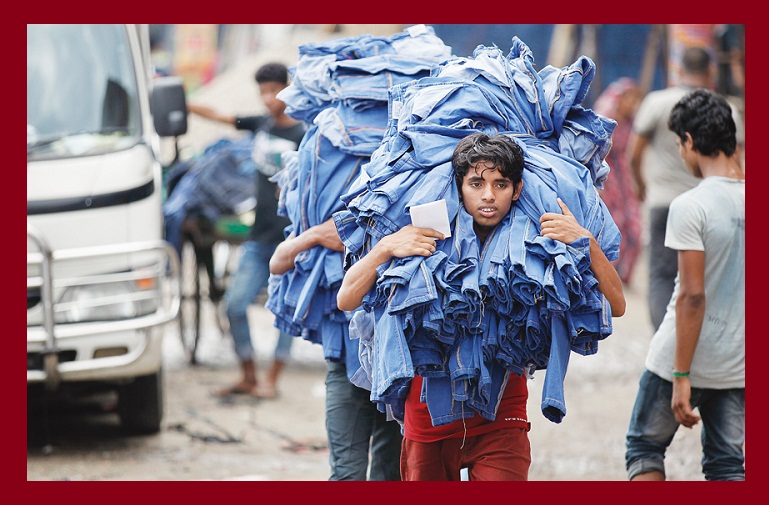It is a common fact that developed country collects their garments item from least developed countries. But buyer conditions are gradually becoming very tough and hard to meet. Nowadays buyer has some requirements before placing bulk order to garments factory. They generally expect the following elements from the manufacturers or vendors. If they show disregard to meet the following criteria, then it would be tough to get frequent order from buyers end. Thus, garment manufacturers should emphasize to meet the following demands to get more bulk order:
- Competitive price
- High-quality product
- On-time shipment
- Verity of style
- Quick response
- Short lead time
- High labor standards
- Safety at workplace
- Durable code of conduct
- Social compliance
- Eco-Friendly concept
- Corporate social responsibility (CSR)
Let’s discuss the above buyer requirements in brief for your easy understanding:
- Competitive price: Usually buyer emphasizes to collect more garment items from different vendors through competitive price. Competitive price will keep you hundred times ahead from other vendors. It is one of the significant factors to get huge order from buyer end. Thus vendors should pay more attention to erase extra expenses to offer competitive price to buyer to receive huge order.
- High-quality Products: Product quality is another sensitive issue to buyer. Buyer also deserves high-quality products with minimal cost. They will never compromise with any quality issue. So vendors should organize their quality team to improve product quality.
- On-time shipment: Garment manufacturing is a labor base and season wise chain business. There are a couple of sessions that exist in developed country such as summer, fall, winter. Buyer expects on-time shipment from vendors to grab the seasonal customers. If vendors can’t meet on-time ex-factory, then buyer may cancel bulk order or force to carry air shipment cost. These attempts will incur a loss to vendors, and relationship will be declined between buyer and vendors.
- Verity of style: More production capabilities of apparel items will decline buyers sourcing cost. Thus buyer will become pleased and pay more attention if vendors can produce several categories of apparel items.
- Quick response: Garment sourcing is a chain business process. So, buyer always expects quick response from vendors end. If any problem arises during order handling vendors should raise that issue to buyers to get prompt support. Don’t play hide and secret game with buyers, because it will ruin confidence level.
- Short lead time: There is an urge from buyers end to reduce shipment date because they have to pick consumers demand without hassle. So vendors should pay attention to shorten garments ex-factory date anyhow. Vendors should contact with suppliers and reorganize factory supply chain and production team to reduce lead time.
- High labor standards: Skill workforce is an asset to any production unit. Skill workforce can produce high-quality product. Buyer will pay extra value if factory exists training facilities to escalate workers effort.
- Safety at workplace: Nowadays buyer can’t compromise regarding workers safety issue at workplace because buyer has to face several questions at their consumers whenever arises any workers safety incident. So factory should appoint safety officer to measure workers safety and erase all obstacles from production floor. Safety officer should rearrange rescue team, train up them, and do fire drill regularly at factory premises.
- Durable code of conduct: Each buyer has some particular code of conduct such as child labor, forced labor, workers safety, sexual abasement, working hours, labor rights etc. Vendors have to obey that code of conduct and try to implement that code of conduct as early as possible.
- Social compliance: It strongly contributes to developing an ideal factory. Social compliance is one sort of basic understanding of social accountability, which helps to understand and monitor the compliance part of it in protecting the image of a particular brand of product. Compliance Audit checklist is essential for garments manufacturing factory. To get an order from the buyer, company must have to pass social Compliance Audit. Buyer may cancel the order if manufacturer fails to pass the Compliance Audit.
- Eco-Friendly concept: Global climate is changing rapidly. As a result garment factories are going green with Eco-friendly technologies to meet a growing global demand for green products. Leadership in Energy and Environmental Design (LEED) is one of the most popular green building certification programs used worldwide, which is under the non-profit U.S. Green Building Council (USGBC).
- Corporate social responsibility (CSR): Nowadays, buyer will count factory CSR programs. CSR is an evolving business practice that incorporates sustainable development into a company’s business model. It has a positive impact on social, economic, and environmental factors. CSR is a self-regulating business model that helps a company be socially accountable to itself, its stakeholders, and the public.We are trying to deliver a brief conversation to focus on most common buyer requirements to get bulk order. Factory should fulfill the above requirements to receive large apparel order from buyers end.
You may like: Merchandisers key responsibilities once get a bulk order




